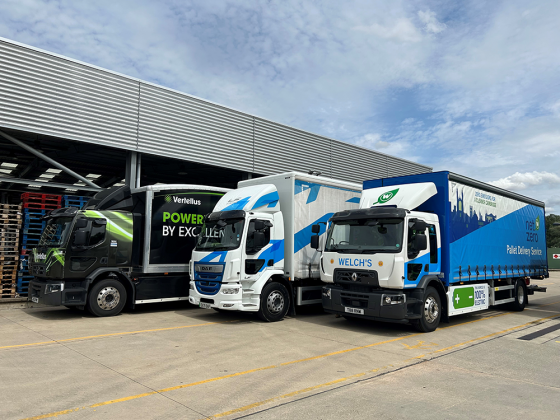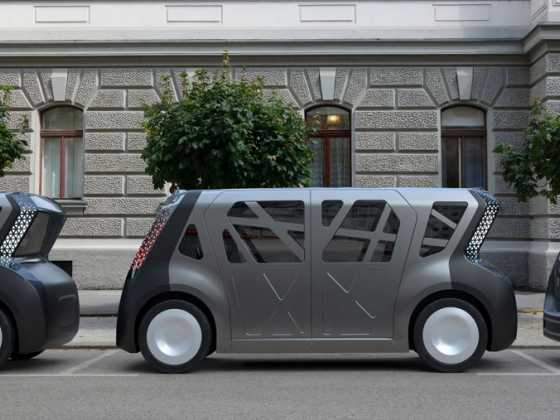Expert panel: electric fleets

GreenFleet taps into the minds of its expert panel to assess the place of electric vehicles in company car fleets and what the major barriers to adoption will be moving forward.
Despite still occupying a relatively small proportion of total cars on British Roads, electric vehicles (EVs) are steadily improving sales and occupying an increasingly prominent share of the UK automotive market.
9,657 ULEVs were registered in the UK from April to June 2016, which represents an increase of 49 per cent compared to the same period last year and 253 per cent compared to 2014.
This trend will have to continue, and likely improve, if the government is to reach its target of almost all cars and vans to be zero‑emission by 2050, and the government had pledged £600 million worth of funding across this parliament in order to achieve this.
Transport Minister John Hayes announced a major £35 million package to boost the uptake of ultra-low emission vehicles across the UK on 13 October 2016, which includes £20 million to help councils roll out charge points for ultra-low emission taxis; up to £10 million for charge points outside workplaces and homes where there is no off-street parking; £2 million for public and private sector organisations to deploy hydrogen fuel cell vehicles; and a £3.75 million scheme to encourage the uptake of zero emission motorcycles and scooters.
Thus far, fleets have played an important role as early adopters of low emission technology, as fleet managers look to improve average fleet emissions, increase efficiency and save money.
Europcar recently placed the largest‑ever order for the Renault Zoe and now has 55 of the EVs as part of its hire and support fleets, strengthening its commitment to make five per cent of its fleet all‑electric by the end of the decade.
Vehicles like the Nissan e-NV200 have also proved popular, with Jersey Post recently purchasing 15 of the all-electric vans to make up part of its 110 strong van fleet following a successful 18 month trial.
The public sector is also taking a leading role in showing how low emission vehicles can be effectively incorporated into fleets, with Leeds City Council deploying 42 new EVs in 2016, which will travel a combined 45,000 miles a year and offer fuel savings of up to £24,600.
Moving into the future we are likely to see fleets take even more decisive steps to lower emissions, especially those that operate within cities with high pollution levels.
A government consultation was launched in October 2016 to evaluate how best to introduce Clean Air Zones in key cities across the UK. There are plans in place to launch these new Clean Air Zones in Birmingham, Leeds, Nottingham, Derby and Southampton by 2020 to deliver on the government’s commitment to reduce emissions.
Although the exact details of how these Zones will operate is not yet clear, it is likely that targeted areas with the worst air quality could limit the use of older more polluting vehicles and introduce measures to encourage new low emissions vehicles.
These kind of plans are already being put forward for London, as Mayor Sadiq Khan has announced his intention to introduce the ultra low emission zone (ULEZ) by 2019, a year ahead of the original schedule. The ULEZ will look to take ‘bold action’ to tackle to growing issue of air pollution in the capital and includes a proposed emissions surcharge that would mean drivers of older more polluting vehicles would be made to pay an additional amount on top of the congestion charge.
Electric fleets
EVs will likely become an even more attractive option for fleet managers amid these increasing charges and restrictions.
Discussing why EVs are particularly suitable for company cars, Chargemaster’s Mark Bonnor-Moris highlighted the fact that they excel in cities with poor air quality and are much more efficient for stop-start journeys. Mark believes that Pure EVs ‘have an important role to play where journey distances are more local’ and gives the examples of pool cars, multi-drop courier journeys in cities/urban areas and maintenance teams who visit multi‑sites within a determined geographical area.
He acknowledged that pure EVs may not be suitable for all company car needs and thinks that plug-in hybrid electric vehicles (PHEVs) can also play an important role in a company’s fleet mix. Mark believes that PHEVs are becoming increasingly popular as they ‘enable longer motorway distances whilst ensuing zero emission driving for shorter distances and improving air quality in urban/city environments’.
In Gary Stirling’s mind, EVs make ‘perfect sense for company cars and fleet.’ He said: “The savings that can be made by fleet managers on fuel costs compared to the cost of charging an electric vehicle are incredible and that’s before you take into account the zero‑rated car tax and zero rated fuel tax.”
The New Motion’s Sander van der Veen echoed Stirling’s sentiment and noted that ‘the largest immediate impact of EVs to a fleet is the sharp reduction in fuel costs’, with the cost per mile being a third to half that of a petrol car at current price levels.
Poppy Welch, head of the Go Ultra Low campaign, said that EVs ‘deliver on both counts making sound financial and environmental sense’ and she thinks that the wide variety of EVs now available on the market means there is a plug-in model to ‘suit the needs of every fleet and company car driver’.
She explained: “For example, comparing a zero‑emission BMW i3 (£30,980 on the road) with an almost identically priced 104g/km Volvo V60 D4 SE Nav (£31,045), reveals the tax benefits for lower (20 per cent) and higher (40 per cent) rate drivers and the Class 1A NIC savings for employers over four years. Over the four-years to 2019/20, company car drivers will pay a total of £2,981 less in BIK tax on the BMW i3 if a lower rate taxpayer and £5,963 if a higher rate taxpayer. Employers over the four-year period will save themselves a total of £2,056 in Class 1A NIC by choosing the BMW i3. On a fleet of just 10 models that equates to a saving of more than £20,000.”
In addition to the large longer term tax savings, Sander highlighted the ’significantly reduced’ maintenance costs of EVs, which can be up to 20 per cent less that traditionally fuelled vehicles as there are much less turning parts that could break.
He also noted that moving to a ‘real green fleet’ has an instant positive impact on a company’s Corporate Social Responsibility performance.
Key considerations
Gary Stirling stressed that ’it is of vital importance that organisations do their homework before committing to EVs’. He believes that is ‘essential’ that companies ensure they get the right specification for their needs and suggested that a PHEV can be a ‘good stepping stone’, giving drivers the benefits of an EV with the back up of a combustion engine.
Although he believes EVs are the future, Gary also cautioned that they ‘may not meet every organisations needs right at this very moment’.
Poppy Welch has a slightly different opinion and believes there is an ‘electric vehicle for every job’, but shares Gary’s opinion that fleet operators must do their homework to ensure they ‘select an appropriate vehicle for their needs’.
For Mark Bonnor-Moris there are three major considerations for fleet operators when selecting an EV: journey cycle, charging and driver education.
He explains: “Many fleet operators wrongly assume mileages travelled daily are higher than they are in reality. Data from the UK government shows that more than 99 per cent of UK daily car journeys are shorter than 100 miles. Where a vehicle travels less than 70 miles every day, these are perfect for switching to a pure EV vehicle.
“Charging is another consideration, there is a misconception that charging infrastructure will involve significant investment however this is not the case. In most cases a small number of charges installed in the right location will be more than sufficient.
“And finally there’s driver education. Drivers generate bad habits, which mean less efficient driving, which is more noticeable in a pure EV. Smooth acceleration, smooth breaking, predicting the road ahead so drivers benefit from regenerative breaking will significantly increase mileages achieved in pure EVs and most manufactures can help here at no cost.”
Poppy also stressed the importance of driver training and advised that companies can ‘help employees choose the right vehicle by providing guidance and education on company cars to help them understand the tax implications’. This includes ensuring employees understand how to run EVs as efficiently as possible and understanding the government support available - such as the Electric Vehicle Homecharge Scheme which provides up to £500 off the cost of installing a home charger.
Sander shares Gary’s view that a PHEV could can often be the ‘best option’ instead of a pure EV, but cautions that it is of ‘crucial importance to monitor and maximise the electric miles’, otherwise the expected fuel savings will not materialise. He recommends that the best way to achieve this is ‘for a fleet manager is to install smart, cloud-connected charge points that allow monitoring, driver identification and billing and settlement via a back-office system’.
Overcoming concerns
All of our experts acknowledged that both fleet operators and private drivers have concerns over switching to an EV, but they believe many of these are overblown and can be easily overcome.
Range anxiety was highlighted as one of the main concerns and major barrier to adoption, but Poppy Welch thinks that this fear ‘quickly fades as the capabilities of plug-in cars are understood’.
She explained: “The average UK commute is less than 10 miles and the majority of plug-in car and van drivers are able to charge their vehicles entirely at home or work, only occasionally using public charge points as a back-up or additional top-up for longer journeys. As well as only commuting short distances, more than a third of UK motorists never travel more than 80 miles in a single trip, within the range of most pure EVs.”
Poppy also suggested that boosting opportunities to charge by installing workplace charging can help to counter any potential issues within an electric fleet.
Mark Bonnor-Moris also believes that range anxiety can be ‘very simple to address and overcome’. He advises: “By reviewing fleet journey cycles to identify to which vehicles can easily be substituted for a pure EV, you will make the transition successfully, achieve cost and CO2 reductions and not restrict existing journey cycles. Combine this with driver education and you will see the benefits of increased vehicle range through more appropriate driving style.”
While he also acknowledges range anxiety as the main concern for drivers, Gary Stirling believes that developments in charging infrastructure, paired with the ’ever developing battery technology’ which car manufacturers are applying to their vehicles, means that it ‘will only be a matter of time until range anxiety is a thing of the past’.
He uses the Tesla Model S P100D as an example of the capability of EVs, as the premium all-electric sedan has the ability to travel 381 miles on a single charge, which Gary rightly points out ’is the equivalent of travelling from Glasgow to Milton Keynes’.
Sander van der Veen also brings up the issue of high purchasing costs, which he thinks prevent some drivers and fleet managers from choosing an EV. According to Sander, this concern can be ‘easily overcome by generating more awareness about how electric vehicles are better for business’. He claims that knowledge about subsidies offered in the UK is the ‘biggest step’, which must be complemented by increased ‘understanding of the total cost of ownership savings electric fleets can deliver in the short term’.
A look to the future
According to Sander, there are four key developments that we will continue to track for the evolution of electric cars: improved battery technology; load balancing on the grid; V2G and wireless; and fully automated and connected cars.
Sander explains that even more choice will be available to drivers in the near future, with a dozen new EVs set to be released in Q1 2017. In his words, ‘the race is on to improve battery technology’, as he thinks this will be the next big step in improving the performance if EVs.
He says: “We will see increasing battery energy density (kWh/kg), thereby reducing weight and volume requirements as well as decreases in cost (£/kWh). This may continue to come from incremental improvements to lithium-ion technology in the short term, but likely also from the use of different materials in the mid to long term.”
Sander also thinks the movement towards connected and fully autonomous cars will play an increasingly significant role in the future of mobility.
For Mark Bonnor-Moris, there are two key factors changing the market: batteries are becoming more powerful, so range is increasing, and production is scaling up, so cost will start decreasing. Mark explains that this will ‘result in a larger addressable market and lower cost of ownership’, which he thinks will make the EV fleet mix higher.
Poppy Welch has a positive outlook for the future of electric fleets, as EV technology is ‘constantly evolving and improving, making the plug-in experience increasingly convenient for motorists’. She singles out the new Renault Zoe, which will have a range if 250 miles by the end of 2016, as a good example of the kind of practical options that will become even more readily available to fleet managers in the near future.
Gary Stirling shares this positive attitude and believes it is an ‘exciting time to be involved with electric vehicles’. Examples such as the Tesla Model 3, where over 400,000 have already been pre-ordered, make Gary believe that it is ‘only a matter of time until the majority of vehicles on the UK roads are electric’.
Expert final thoughts
Mark Bonnor-Moris
"In a recent piece by Bloomberg New Energy Finance, they forecast electric cars to be cheapest across the board within a decade and predict 35 per cent of new cars sold could be electric by 2040. This is happening now with the Nissan LEAF promoting 155 miles range and many more EVs planned for launch in 2017 with a 200 mile range – the truth is EVs are moving from the niche or second car market to a vehicle for the masses. It’s an exciting time to be part of this market development."
www.chargemasterplc.com
Gary Stirling
"It’s an exciting time to be involved with electric vehicles; with the market still in its infancy there are so many possibilities of where we could end up next. While we see vehicle manufacturers producing cars which are faster, with bigger batteries and longer ranges we also see real development on the charging aspect with wireless charging gaining a lot of interest. When you look at the numbers Tesla have released on the Model 3 where over 400,000 vehicles have been pre‑ordered ahead of its release next year I believe it is only a matter of time until the majority of vehicles on the UK roads are electric."
www.everwarmgroup.com
Poppy Welch
"Electric vehicle technology is constantly evolving and improving, making the plug-in experience increasingly convenient for motorists. Manufacturers are developing plug-in cars with longer range, such as the new pure electric Renault Zoe which will have a range of 250 miles by the end of 2016, enabling motorists to travel further on a single charge, while enhancements to infrastructure are also being made."
www.goultralow.com
Sander van der Veen
"Electric vehicles will become an integral component to our society’s electricity system, dynamically charging and discharging on the grid when required. With the increasing share of intermittent renewable energy sources such as solar and wind energy, electric vehicles will play a crucial role to balance the system. Already today there are early stage pilots with electric vehicles charging wirelessly, reducing the inconvenience of carrying a charge cable. It is likely that this technology will replace slow and fast chargers in the mid-term, while rapid charging most likely will be needing a lead due to the high powers involved."
www.thenewmotion.com







